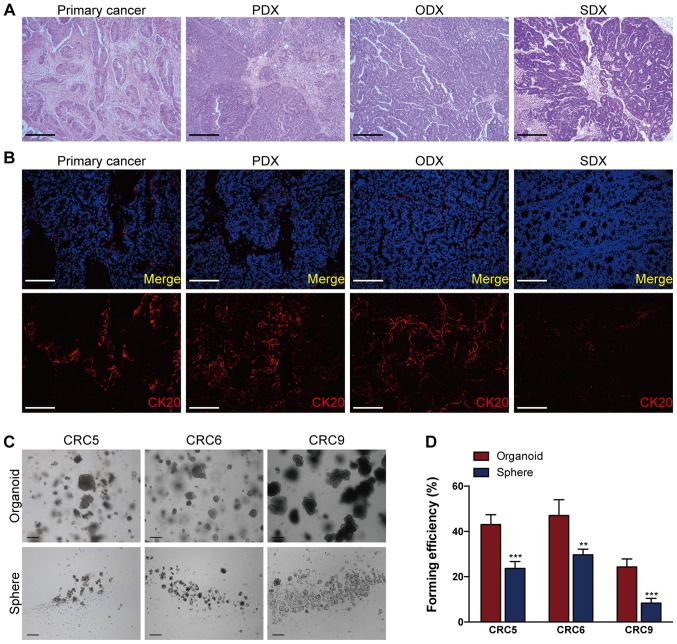Figure 2.
Organoid culture possesses a better efficiency to reproduce primary colorectal tumors than sphere-forming assay. (A) Representative hematoxylin and eosin images of xenografts generated from primary CRC cells (PDX), organoid-derived cells (ODX), sphere-derived cells (SDX) and their parental tumor (primary cancer). Scale bars, 100 µm. (B) Immunofluorescence staining of CK20 in a primary CRC tumor and its corresponding PDX, ODX and SDX. Scale bars, 200 µm. The nuclei of CRC cells were counterstained with DAPI, and the 'Merge' in top panel of (B) indicates the merging of DAPI (in blue) for nuclei and CK20 (in red) for differentiated CRC cells. The cells used in (A and B) were derived from CRC6. (C) Representative images of organoids and spheres derived from primary CRCs (CRC5, CRC6, and CRC9). (D) A total of 1,000 single purified primary CRC cells per well were respectively processed for the sphere-forming assay and organoid culture; 7 days later, the organoids or spheres were photographed in (C). Then, the organoid- or sphere-forming efficiency of primary CRCs were quantified. **P<0.01 and ***P<0.001. CRC, colorectal cancer; PDX, xenografts of primary CRC cells; ODX, xenografts of organoid-derived cells; SDX, xenografts of sphere-derived cells; CK20, cytokeratin 20.

